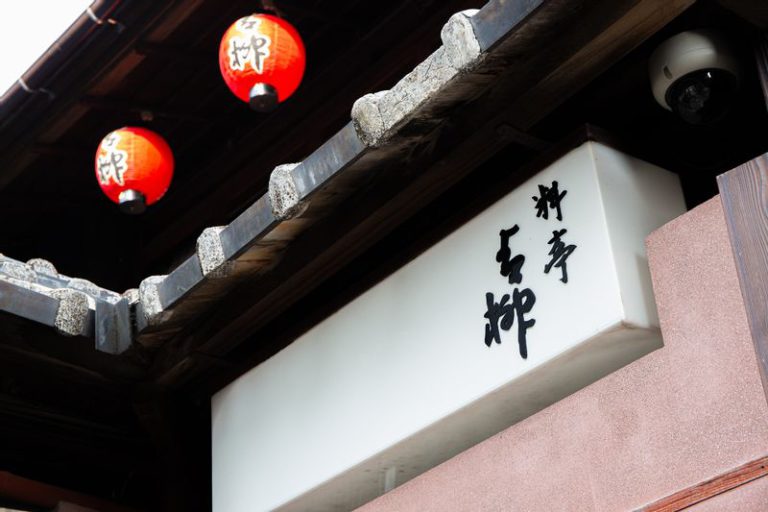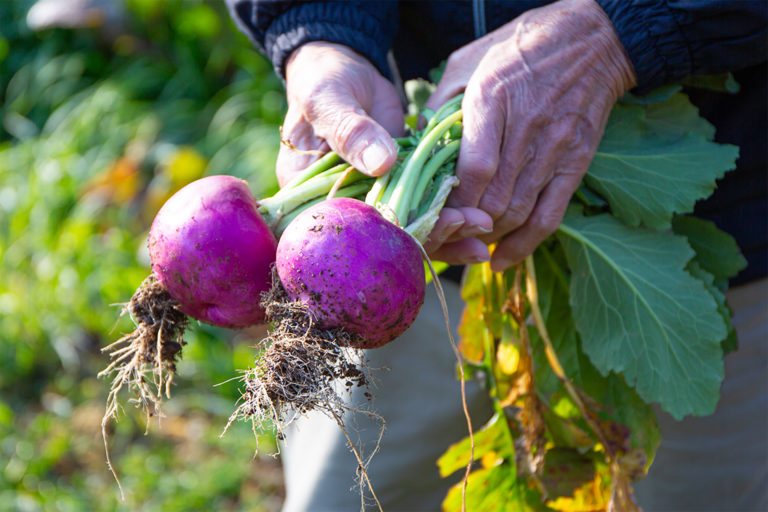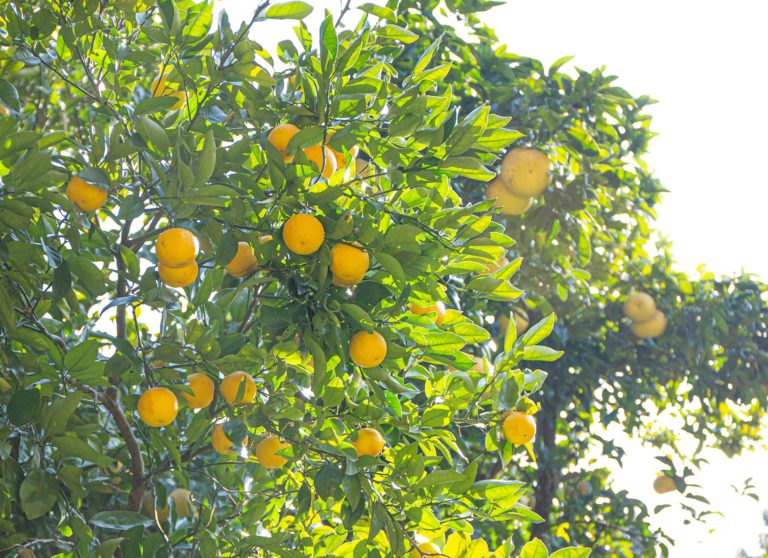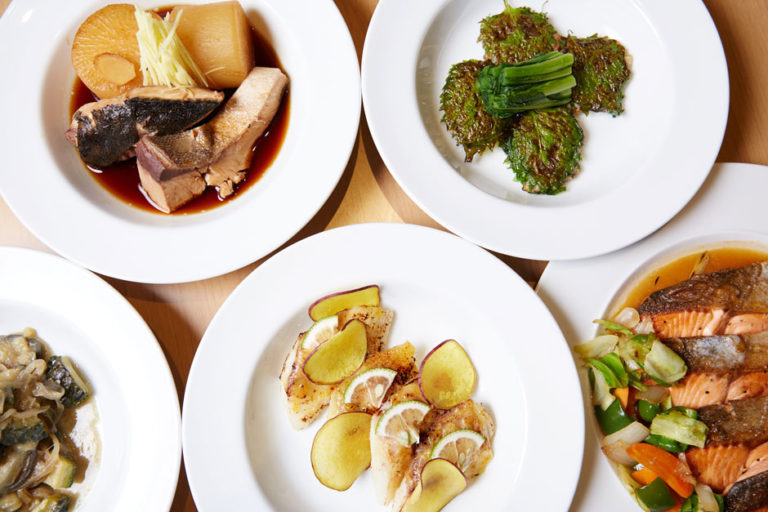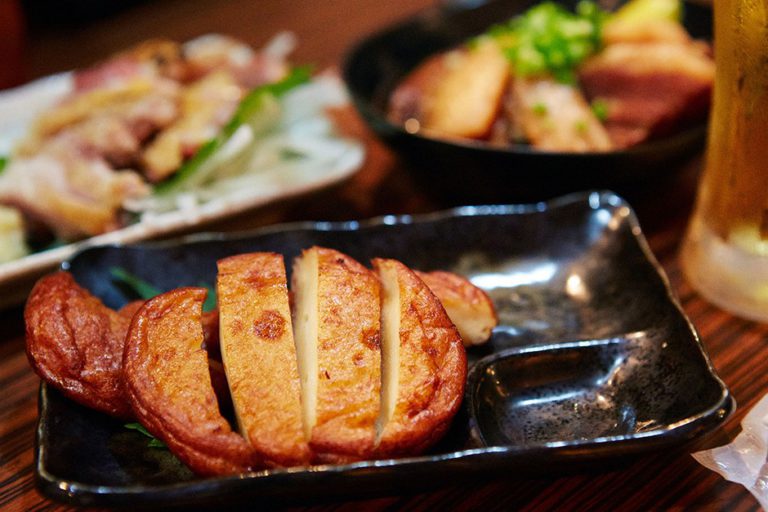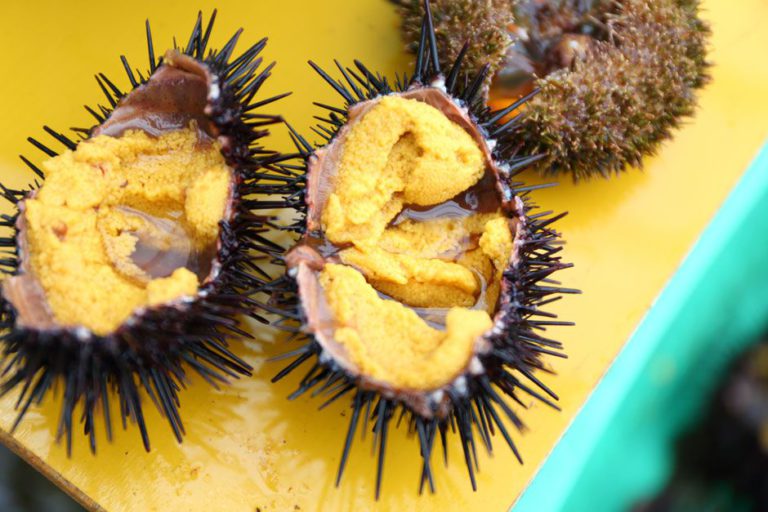Shippoku: A Fusion of Japanese, Chinese, and Dutch Culinary Cultures
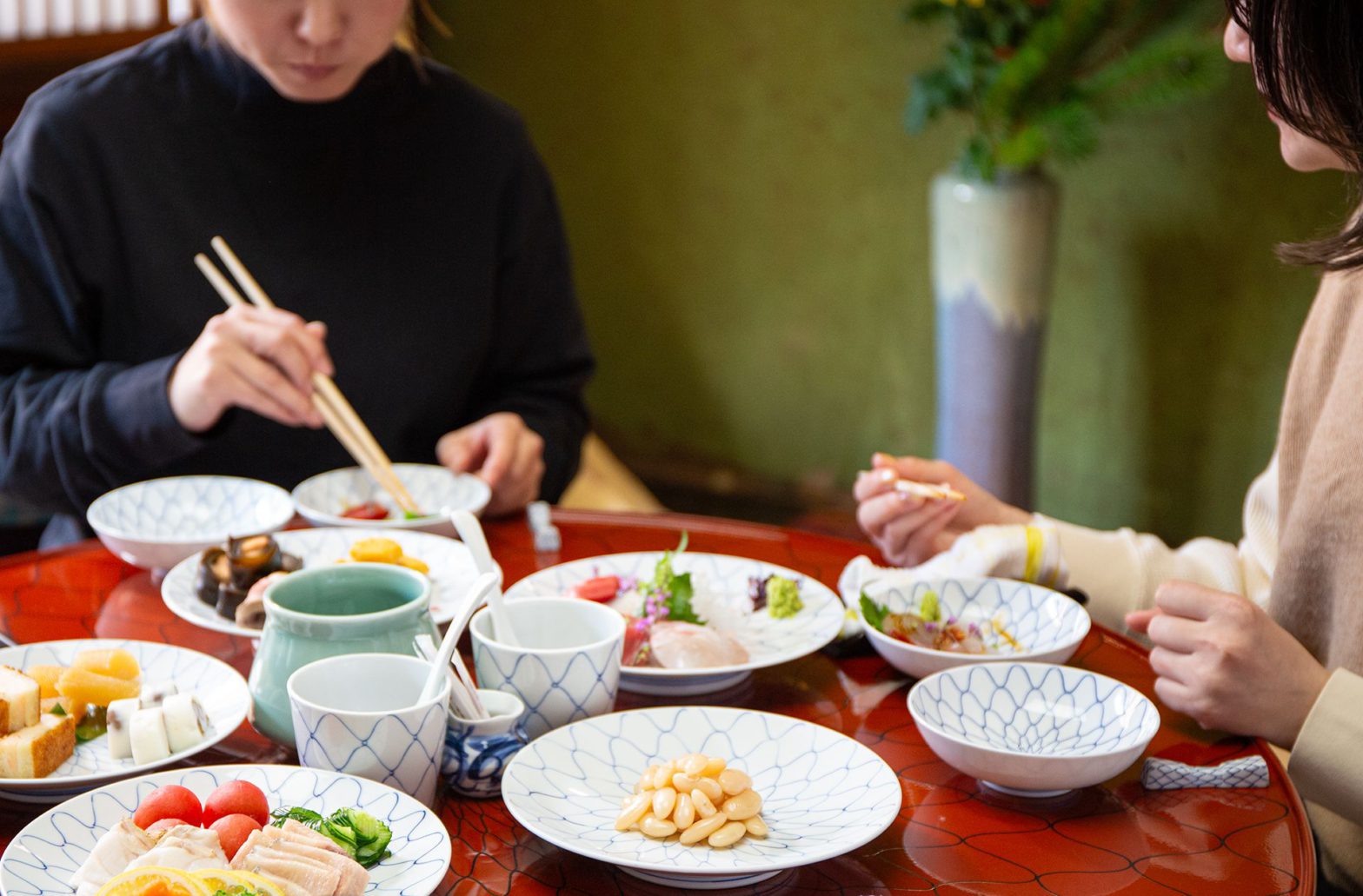
Shippoku: Nagasaki's take on Chinese vegetarian cuisine.

Shippoku is a banquet-style meal featuring multiple courses, traditionally served at a round table. It gained popularity in Nagasaki during the Genroku period (1688-1704). Its roots trace back to Chinese-style vegetarian cuisine, which was enjoyed in Chinese temples. Due to Nagasaki’s connections with China since the early modern era, the city became home to a Chinese community. The Chinese-style vegetarian dishes were served as meals for novice monks at the temples they established in the area.
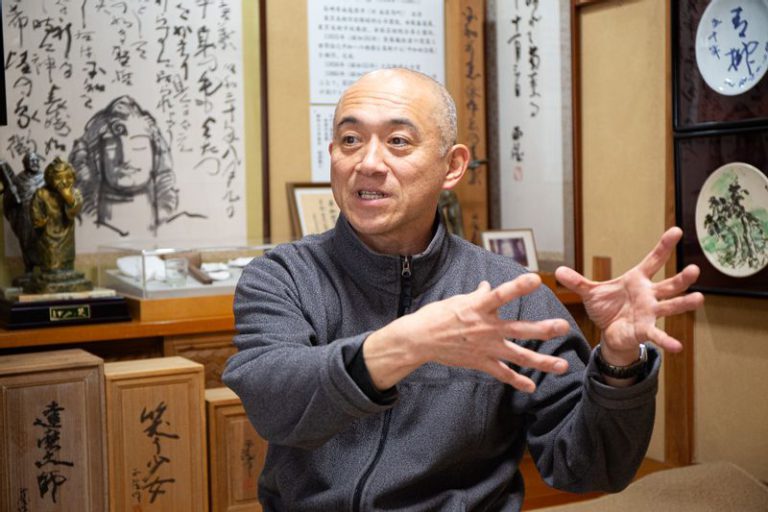
“People from Nagasaki were inspired to replicate the Chinese-style vegetarian cuisine they experienced at temples, and it gradually gained popularity among the wider public. Today, this cuisine is served in Japanese restaurants, though it originally took root as a home-cooked meal, with each household using its own unique set of Shippoku tableware,” explains Hirosuke Yamaguchi, the owner of the Japanese restaurant Aoyagi in Maruyamamachi, Nagasaki Prefecture. This area was once recognized as one of the three major red-light districts, alongside Yoshiwara in Edo and Shimabara in Kyoto. Yamaguchi, who is also a historian and cultural researcher, has a profound understanding of Nagasaki’s rich history.
For novice monks, even the act of eating serves as a form of training. There are numerous rules and etiquette to observe when it comes to Shippoku dining, but the cuisine has evolved uniquely. Initially, Shippoku was a vegetarian diet that abstained from meat and fish. However, Nagasaki, rich in natural ingredients and influenced by international contacts, gave rise to a multicultural fusion. Shippoku cuisine was created by blending the finest elements from various culinary traditions.
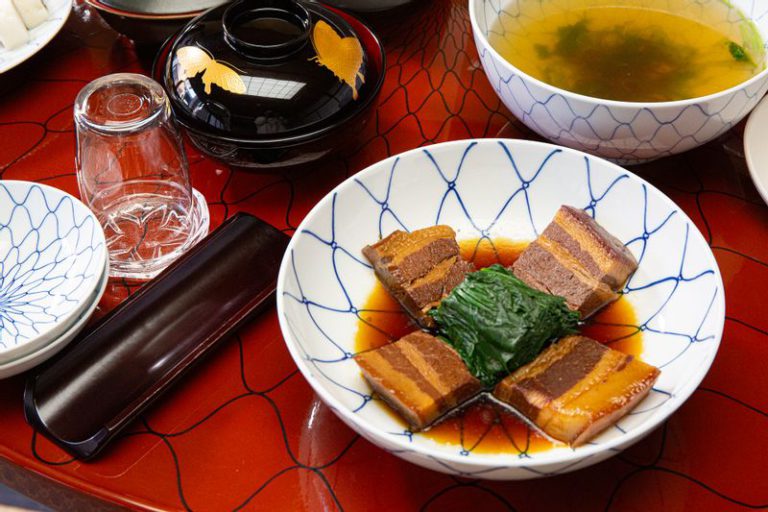
Yamaguchi explains, “Nagasaki is bordered by the sea, providing an abundance of high-quality fish, so sashimi is included. Given that Dejima served as a hub for trade, you can find European-style soups as well. Additionally, Chinese cuisine is represented through dishes like braised pork. In this way, Shippoku cuisine has developed its unique Nagasaki-style variations. One could call it a cuisine for the rapacious.”
Shippoku, a unique blend of Wakaran culture, became immensely popular in Nagasaki. Nowadays, it stands out as a cherished local cuisine that truly represents the city.
A splendid spread on the round table. The feast begins with Okattsuama’s command.
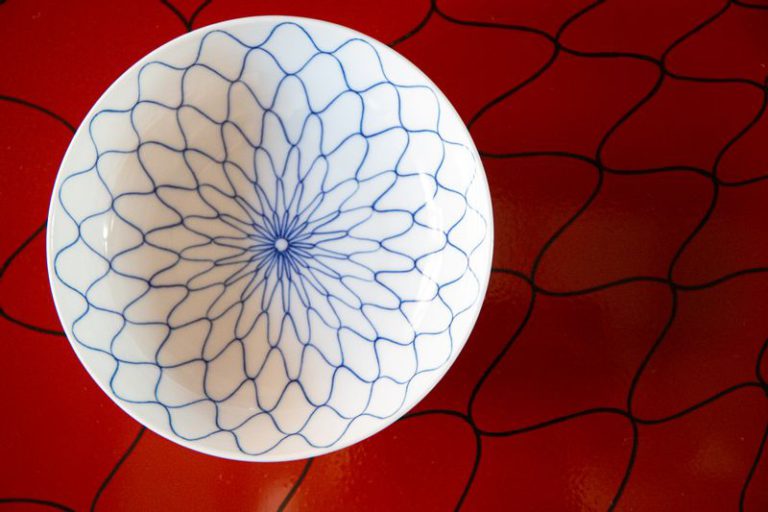
Shippoku cuisine boasts a truly unique menu. The term “Shippoku” refers to a round table with a red lacquer finish and a mesh pattern on its surface. This design is said to have originated from the traditional practice of draping fishing nets over the table instead of using a tablecloth. The design of the tableware can vary from one restaurant to another. At Aoyagi, for instance, you’ll find everything―from plates to bowls―adorned with a fishnet pattern.
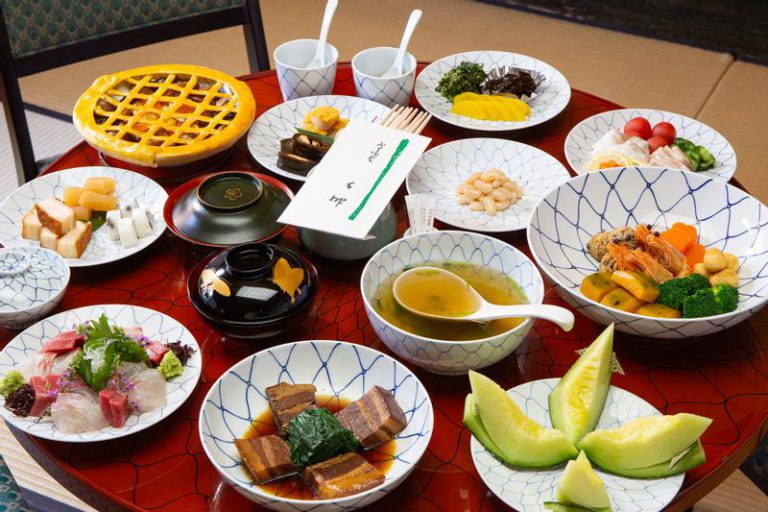
The round table is set with large plates of food ample enough for everyone, and it’s customary to use chopsticks to serve yourself. All the chopsticks are stored in a large bag, emphasizing the sharing nature of the meal. This communal style is particularly fascinating given that 350 years ago when Shippoku cuisine first emerged, there was a stark division between samurai and townspeople, with food typically served in individual portions. For the Japanese of that era, gathering around a shared round table and enjoying dishes from a common platter must have been quite a cultural shock.
“Shippoku cuisine was introduced to Edo and Kyoto around the same time, but it failed to take hold there. I believe this was due to the stricter social hierarchy in those cities. In contrast, Nagasaki served as a trading hub and had a strong foundation for embracing diverse cultures. As a result, people were more open to new ideas, which likely contributed to the acceptance of Shippoku without any resistance.”
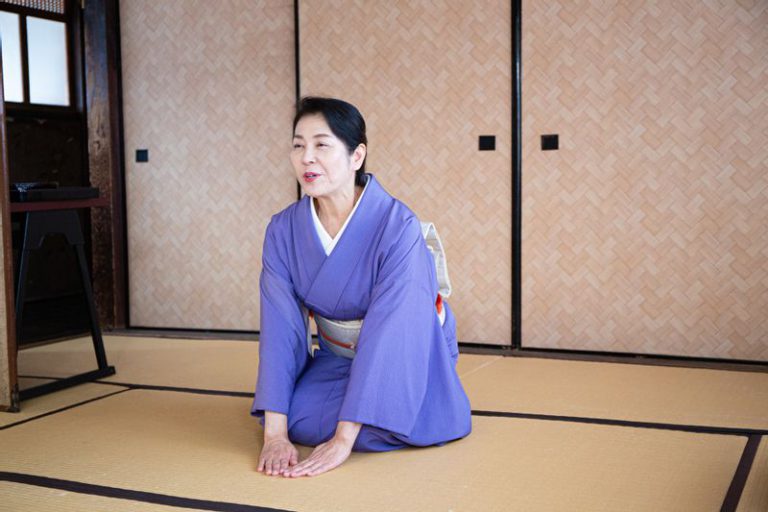
The menu features around seven to eight dishes. While the offerings may vary based on the season and the specific restaurant, the meal usually starts with a selection of appetizers known as sanpin mori. Following that, diners can enjoy sashimi, a vinegared dish, a cold starter like torossun boiled runner beans, and a soup referred to as ohire. The gathering always begins with the Okattsuama (hostess) saying, “Please enjoy the ohire.”
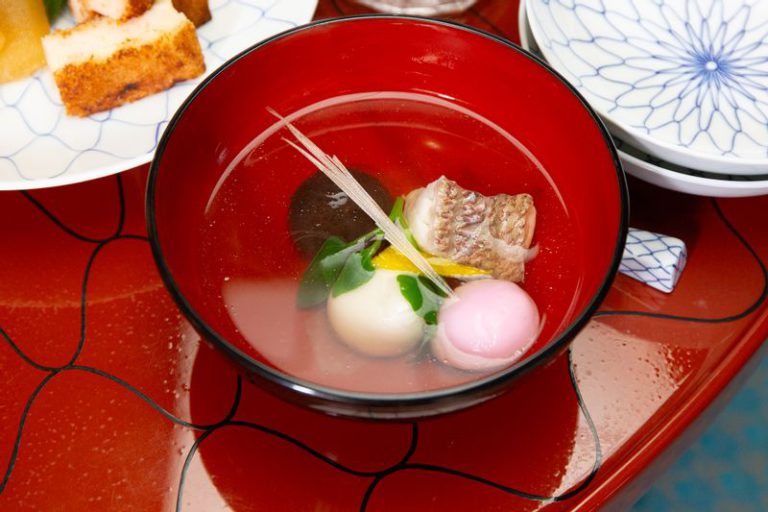
Ohire is a clear soup featuring sea bream. The fish paste dumpling, which comes with a piece of the sea bream tail attached, symbolizes the presentation of the whole fish. According to the Okattsuama, savoring the soup before the toast will help warm you up from the inside.
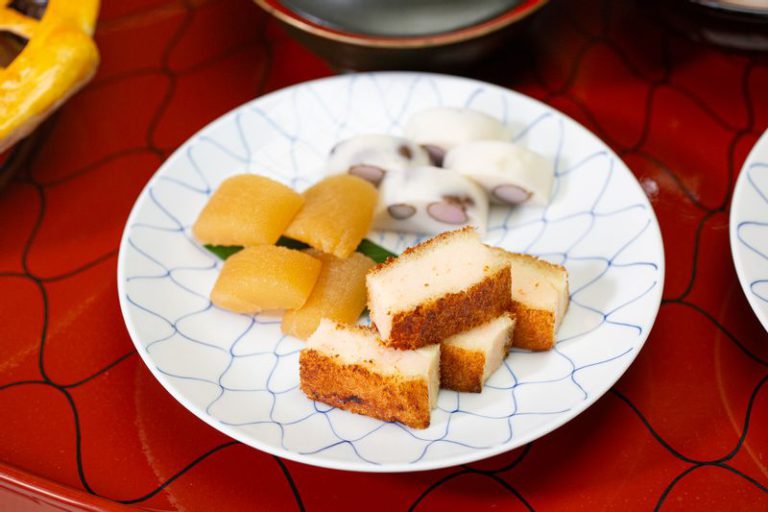
Sanpin mori often features hatoshi, a dish believed to have originated in China during the Meiji era (1868-1912). It consists of minced shrimp fried between slices of bread.
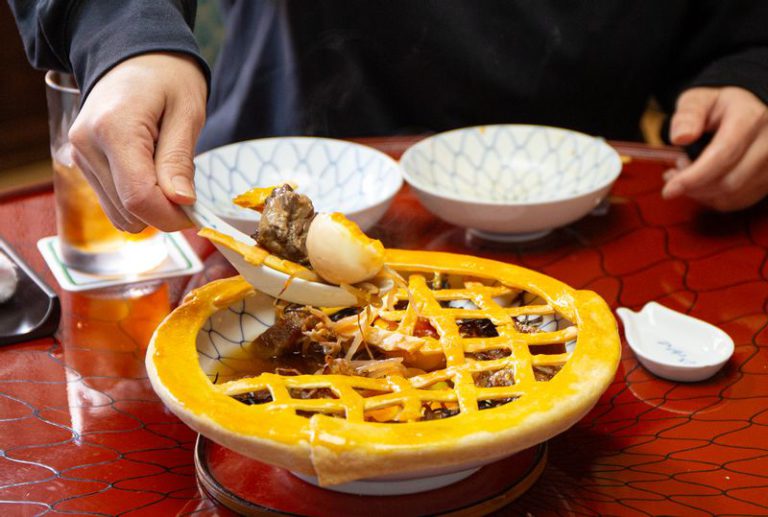
After the appetizers, each hot dish is served one at a time. Among the standard offerings are pasty and buta no kakuni (braised pork belly). The pasty is similar to a stew encased in a pie crust, and at Aoyagi, it features a sweet and spicy stew made with chicken, ginkgo nuts, eggs, and yam, all topped with a flaky, latticed pie crust. Legend has it that the Dutch introduced this dish during Japan’s period of isolation. However, the seasoning of the stew reflects a blend of Chinese and Japanese flavors, giving it a distinct identity that can be described as Japanese-Chinese-Dutch. Interestingly, the term “pasty” is derived from the Portuguese words “pastel,” meaning pie, or “pasta,” meaning dough. Meanwhile, buta no kakuni is inspired by the Chinese classic known as dongpo pork.
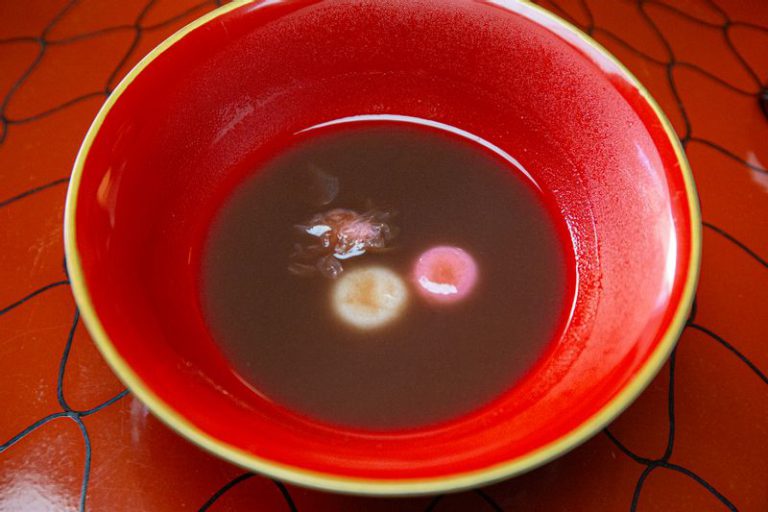
Shippoku starts and concludes with soup, with the final dish always being oshiruko, a sweet adzuki bean soup. The route known as the Nagasaki Highway runs between Nagasaki and Kokura via Saga and is often referred to as Sugar Road, a place where the sugar culture flourished. It’s said that generously using precious sugar was considered the pinnacle of hospitality during that era.
Beans are beneficial for digestion and hold significant meaning in Eastern medicine, particularly in Chinese culture. That’s why, according to Okattsuama, they are often served at the end of a meal. The sweet adzuki bean soup is served with red and white rice cakes, completing this beautiful meal.
Eating is a form of training: Shippoku etiquette
Shippoku, originally a meal designed for novice monks, has some distinctive rules for partaking in it. One fundamental guideline is that each person should use just two small plates to savor all the dishes. This practice harks back to the days of “eating training,” where the emphasis was on enjoying the meal without generating excessive dirty dishes.
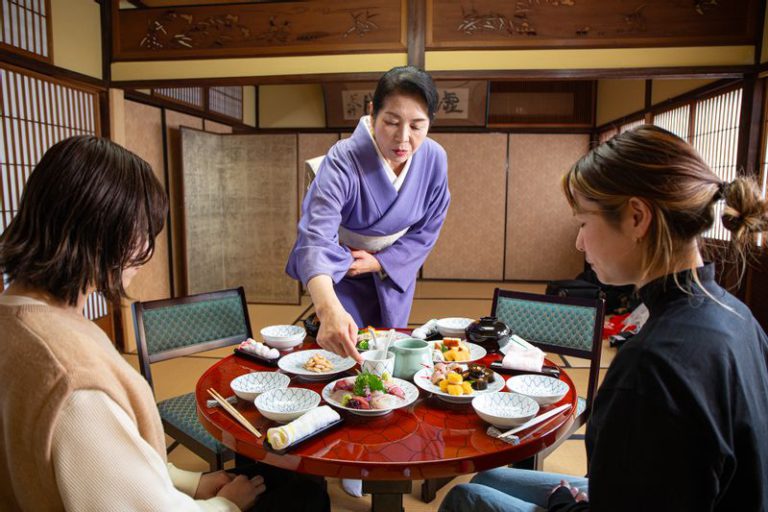
Two plates are used during the meal: one for dishes with a lot of liquid and the other for everything else. When eating sashimi, you don’t use the soy sauce plate; instead, you pour the soy sauce directly onto the sashimi. Any leftover soy sauce is placed in a jar in the center of the table. If your plate is still dirty, Okattsuama will remind you that you can use the leftover soy sauce to dress the garnishes served with the sashimi.
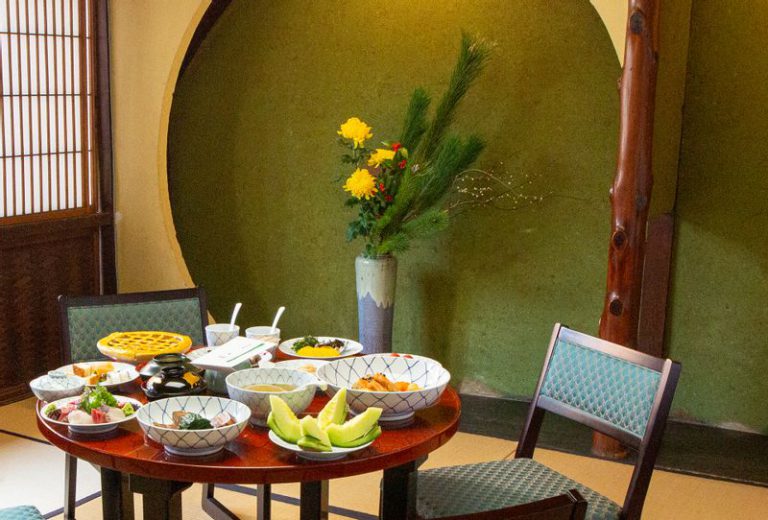
Since the food is always prepared according to the number of diners, it’s important to finish your portion without leaving leftovers. For instance, when it comes to sashimi, not only is the fish served, but also garnishes like shiso leaves and shiso sprouts are included in individual portions. Using your chopsticks to serve yourself is akin to using a serving dish, which helps cut down on unnecessary cleanup. Yamaguchi emphasizes that when everyone enjoys the same meal in equal portions around a round table, it fosters a dining atmosphere that encourages communication, regardless of social status.
Yamaguchi reflects, “I believe that in Chinese temples, once their training was complete, great monks and their disciples would gather around a table to share a meal, often saying things like, ‘Today’s training was quite challenging, wasn’t it?’ Even today, Shippoku cuisine is enjoyed in various settings, from business gatherings to ceremonial events and tourist experiences. I hope it continues to inspire lively conversations among everyone who shares a meal.”
Shippoku cuisine originated in Nagasaki, a city renowned for its historical openness to the outside world and its embrace of new influences. We invite you to savor the unique dining etiquette and diverse menu, allowing you to experience the rich history and distinct character of Nagasaki with every bite.

